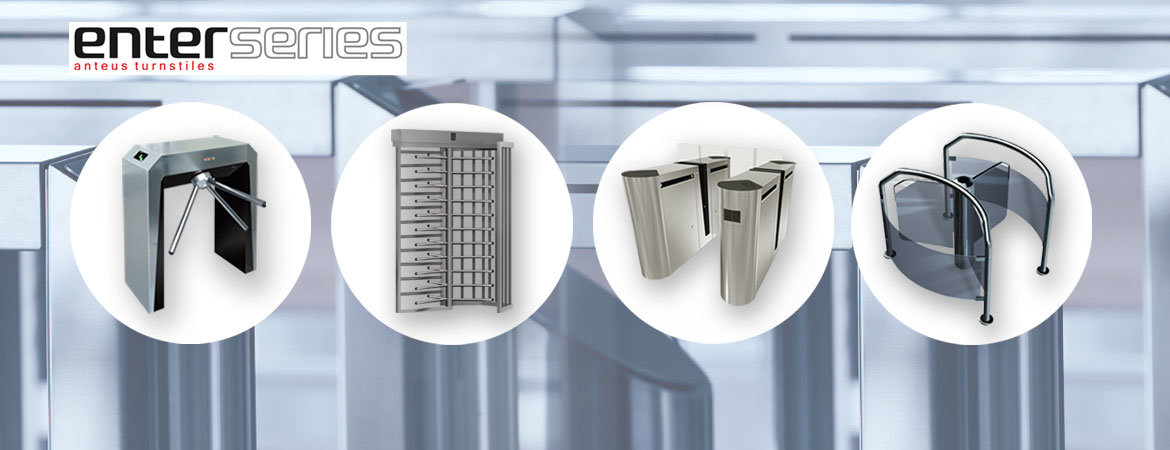In our new article, we take a closer look at access gates. Which ones are there, which are suitable for what and where should they be installed? What is the difference between a swing gate and a swing gate in terms of use? These and similar questions are answered.
Access gate - what is considered an access gate?
If we go back in time a bit, essentially any gate through which visitors, tenants, employees, owners enter a property can be called an access gate. In itself, a simple door or bar could be such a gate, but in the case of access control systems, we call specially designed devices with different functions access gates.
The purpose of an access gate is not really to let people in, but rather to provide some way of checking that they are authorised to enter, or to record the time or purpose of entry. However, it should be noted that each entry point is different, as the entry process is different for, say, a tenant arriving at an office building and a group of visitors entering a museum.
Types of access gates
Anteus offers a range of access devices with different functions and purposes. Specifically, these are:
- Full-height Turnstiles and Gates
- Tripod Turnstiles
- Swing Gates
- Half-height Turnstiles
- Swing Speed Gates
- High Security Portals
- VirusGate
- Barriers
- Road blockers
But which one is ideal for which situation? Let's take a look!
The ‘access gate’ in the last three places on our list is actually a cuckoo's egg, as a virus gate is a device for taking body temperature, checking mask wear and complete decontamination, which is more of a complement to an existing access system than a means of conducting the entry process on its own. A barrier is used primarily for vehicle entry and exit in parking lots and garages, while a road barrier is a robust and highly secure means of vehicle access.
So let's look at the six personal access devices.
Full-height Turnstiles and Gates
We often see this device at the entrance to leisure parks, zoos, stadiums and industrial facilities. A swing gate is a high device (often referred to as a full height swing gate). It should be chosen for places where access and egress would be achieved without the need for an operator. It can be suitable for one-way (e.g. outward only or inward only) passage or two-way passage, depending on the purpose of the site. It also works perfectly with card-based access control systems and ticketing systems.
There are also swing gates that can be used for bicycle access, wheelchair access, and a portable version is available - the latter can be used as a ticketing and access control system or for access to construction sites.
Tripod Turnstiles
The main difference with the aforementioned turnstile is that it is typically used for manned access control. The main reason for this is that while it is impossible to pass through the turnstile without authorisation, the turnstile can be bypassed if necessary, so the presence of staff or camera surveillance is often justified.
However, the advantage is that the staff only has to prevent the above-mentioned unauthorised access, while the gate itself performs the entry, even if it is equipped with a ticketing function. We recommend it for sports facilities, office buildings, industrial areas, both indoors and outdoors.
Swing gates
We recommend them as an addition to the swing gate. Where the passage of prams, bicycles or wheelchairs is typical, this type of access gate is also required. It is also suitable for escape routes, as it is easy to open and visitors can pass through comfortably. Its disadvantage is that it does not allow one person to pass through with one identification, as more than one person can pass through, just like a door. For this reason, this type of gate is most often found next to a revolving fork. It can also be installed as a stand-alone unit, which is practical in locations where only free passage needs to be prohibited or allowed. There are motorised, mechanical and glass leaf versions.
Half-height Turnstiles
The half-height turnstile is essentially the little brother of the swing gate. The principle of operation is similar, but it has a semi-high design. It is less likely to be abused than a swing gate because it is not possible to slip underneath, but depending on its use, human supervision may be necessary. Typical uses include office buildings, sports facilities, swimming pools and spas. There is a glass version, as well as single and double versions of the standard version.
Speed gates
Speed gates provide a more modern and attractive solution to access, and often do not require live personnel. Depending on the design, they can be used on their own to admit prams, wheelchairs, cyclists or can be placed in an escape route. What makes them special is that they can handle all the entry tasks on their own - no other gate is needed. In terms of operating principle, a distinction is made between opening wing, sliding wing and circular wing gates, which are available in a wide range of designs.
Which access gate to choose?
It's best to contact us first. After consultation, we can tell you exactly which access control system is best suited to your needs and recommend the right access gates. Click here to contact us!






